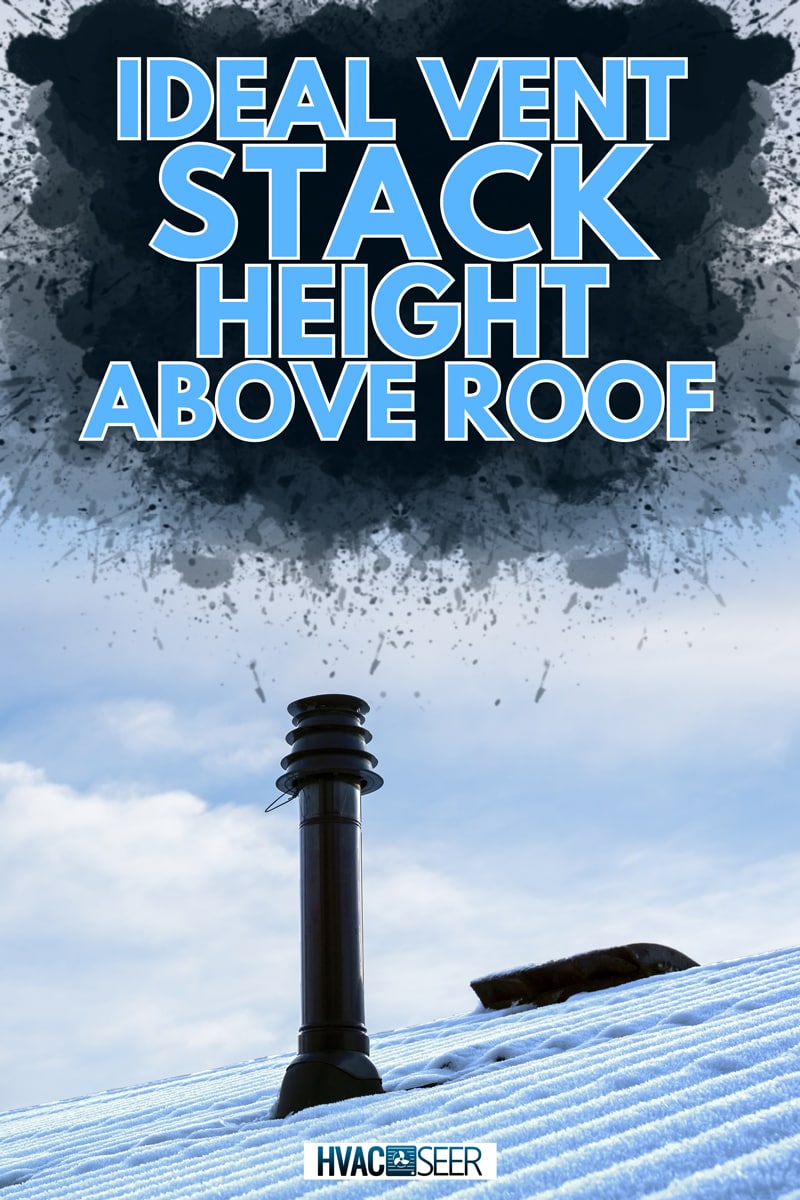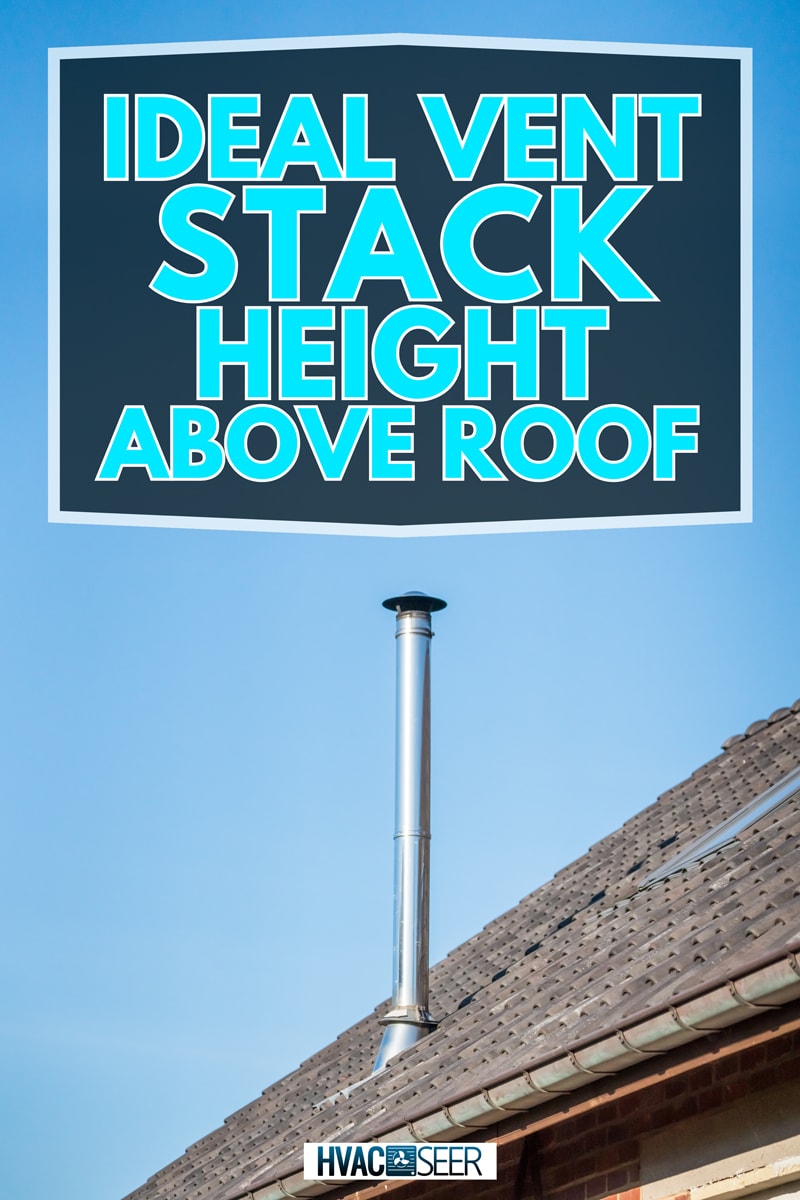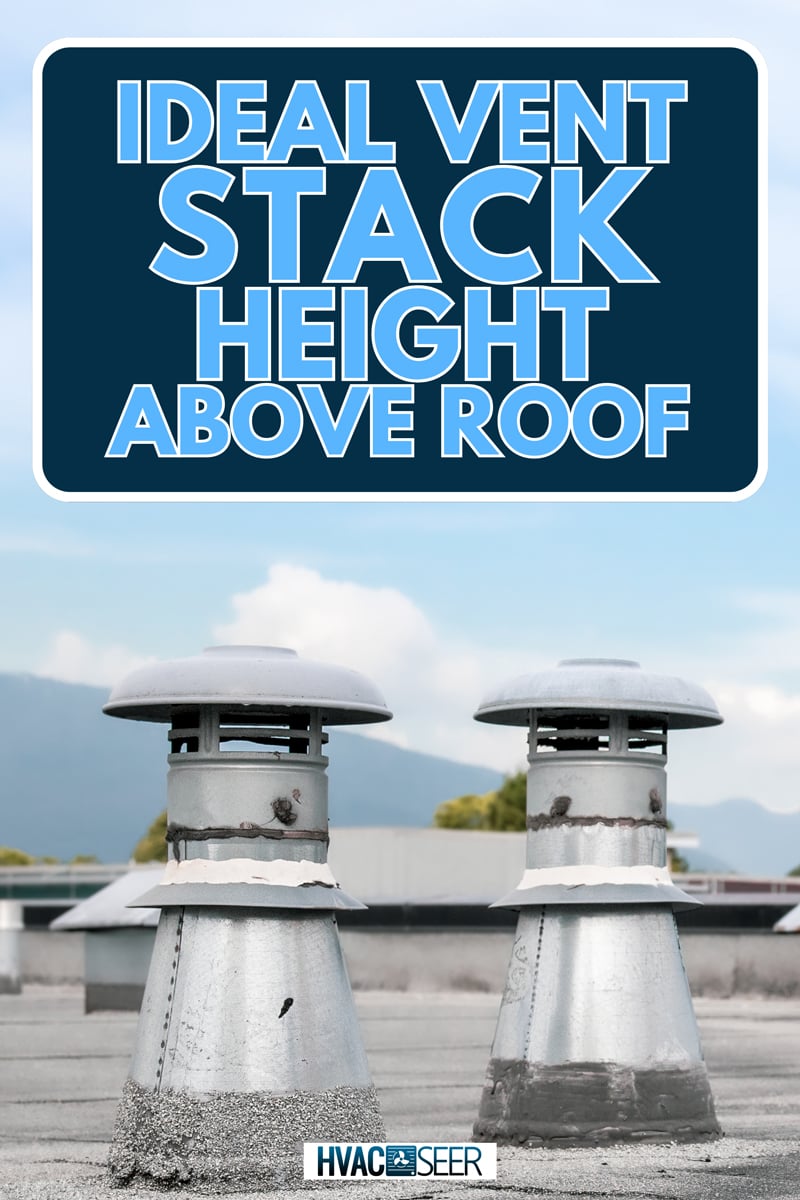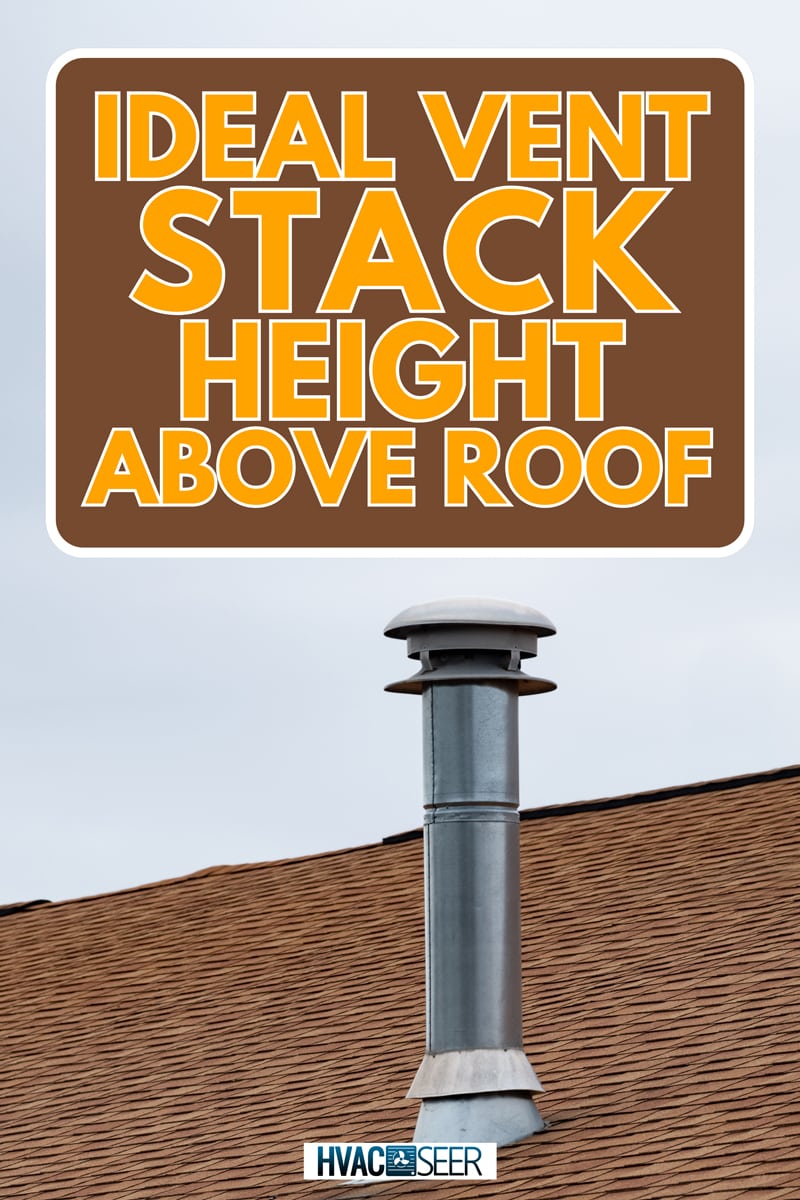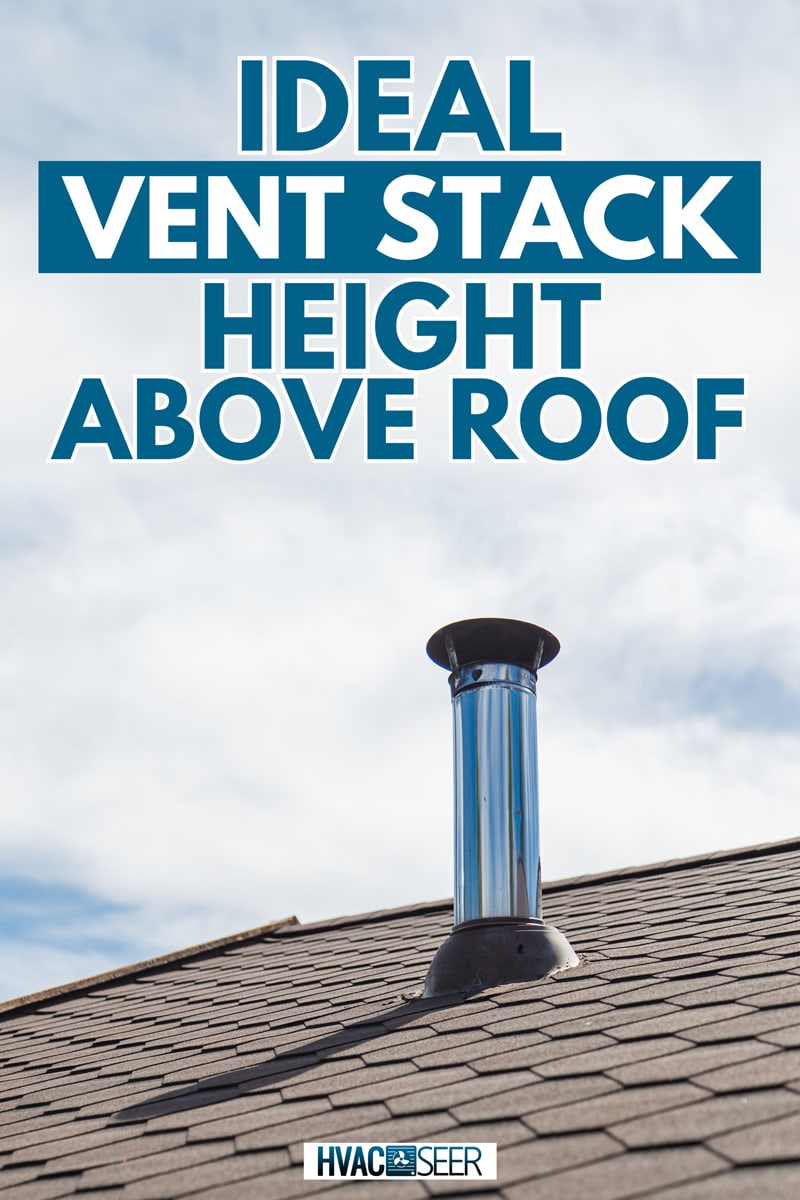Does your vent pipe extension height meet your local building code requirements? We researched how high a vent stack should extend above the roof, and here's what we gathered.
Most contractors follow the standard height for vent stack extensions set by the International Residential Code (IRC).
According to the IRC, the height above fixtures should be at least 6 inches above the highest point of any fixture that the vent serves.
If living in a snowy area, the vent should extend 6 inches above the anticipated height of the snow accumulation on the roof.
If the roof serves a recreational purpose such as a rooftop, deck, or promenade, the vent should be no less than 7 feet above the roof.
Six inches is the general guideline but did you know there are different regulations per state? Read on below and check out our list of vent height requirements according to state.
Also, we'll touch on penalties for plumbing code violations and why it's important to install vent stacks in multiple-story building structures.
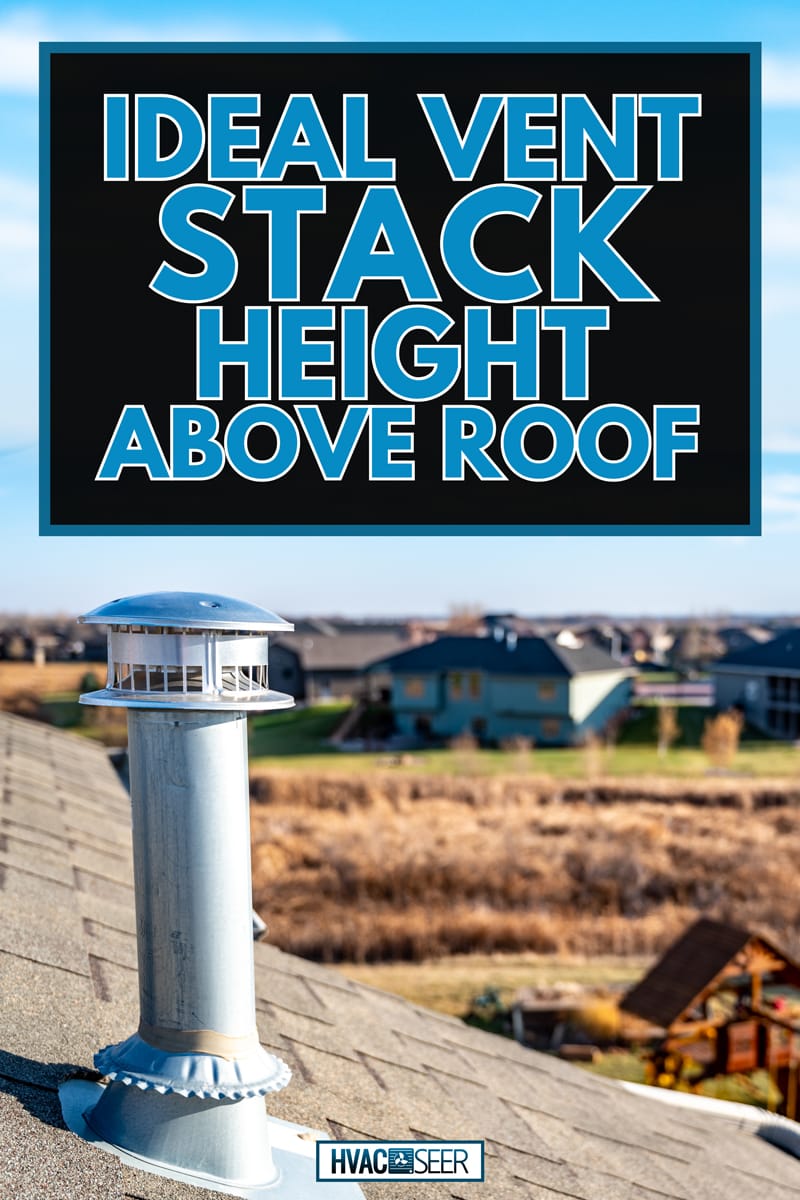
How Long Can A Vent Pipe Be Above Roof?
A vent stack is a crucial component of a plumbing system. It avoids drain clogs and prevents toxic sewer gases from entering homes and buildings.
Vent stack installation ensures that air is entering the plumbing system efficiently and pressure is equalized within the pipes.
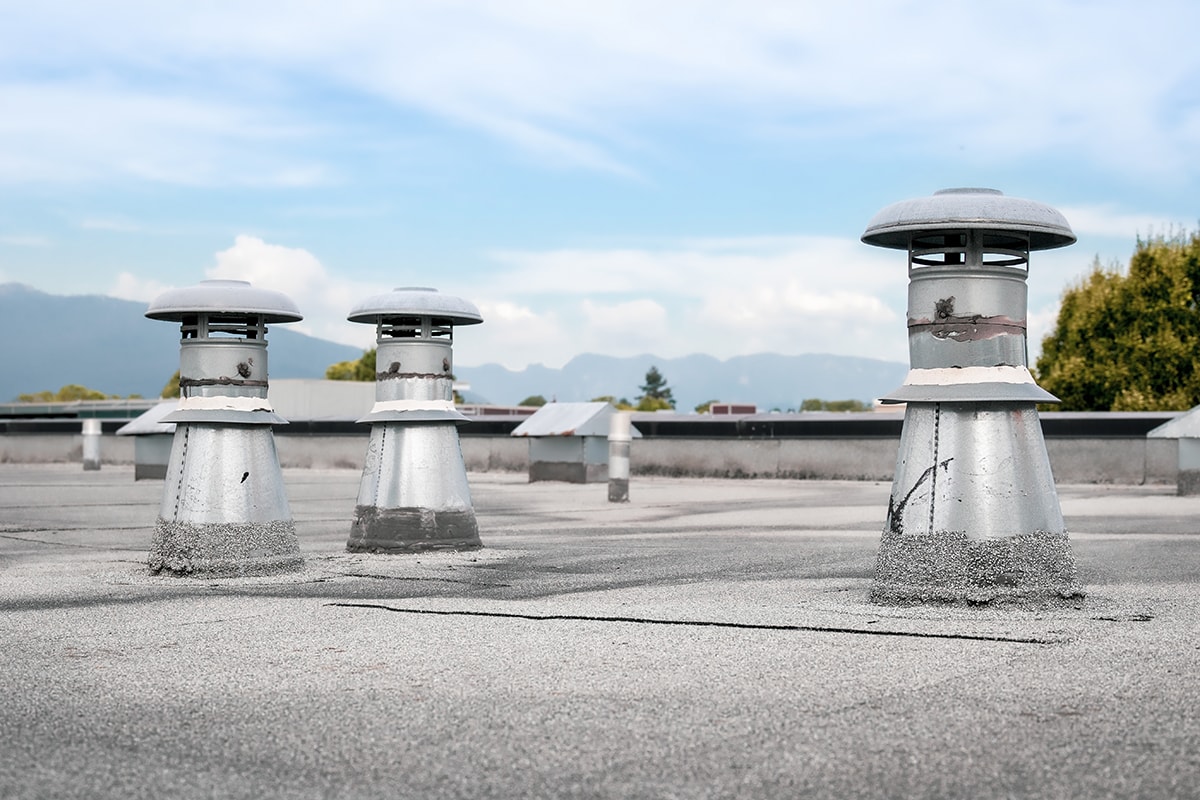
Because it's important to keep toxic gases away, vent stacks typically exit above the roof and away from windows.
Regulations dictate that vent stacks should extend to the correct height above the roofline. Failure to comply with plumbing code regulations can result in penalties imposed by the local authorities.
What Is The Minimum Vent Stack Height?
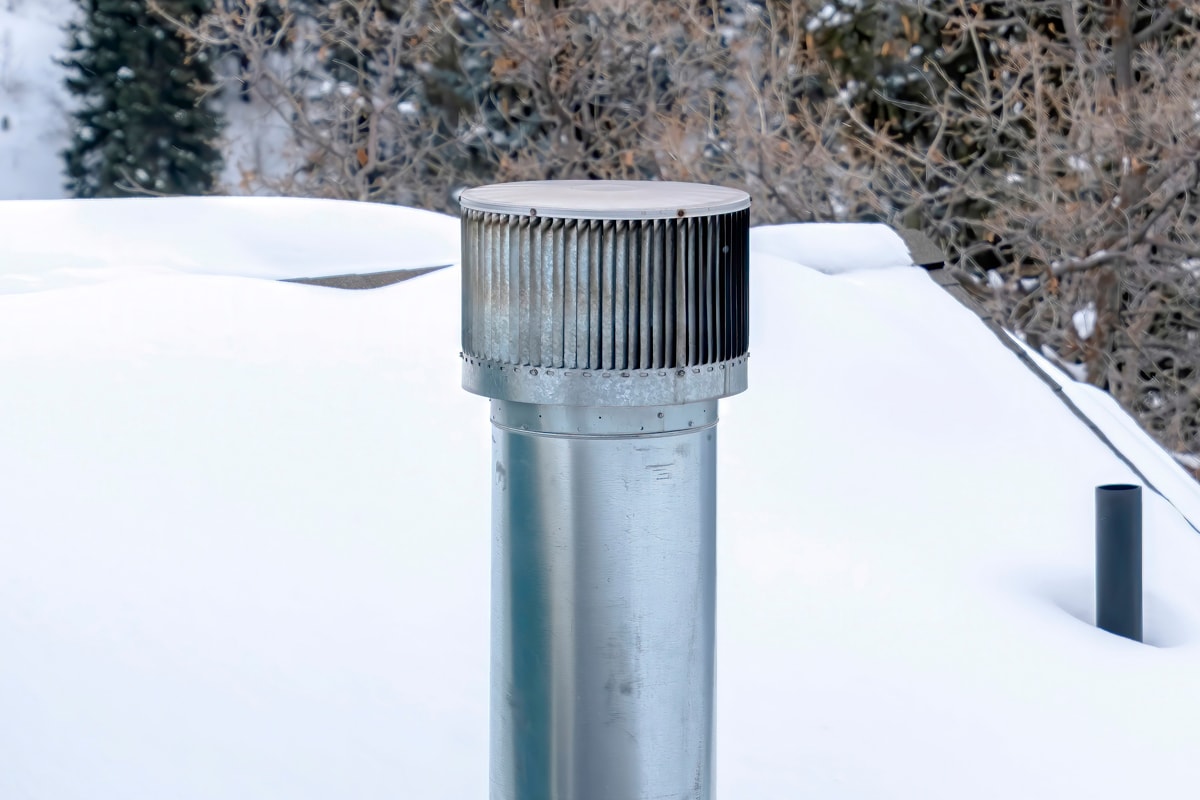
The International Residential Code states that vent pipes should be terminated outdoors, either through the sidewalls of a building structure or above the roof.
Section P3103 of the IRC covering Vent Terminals state that vent pipes that extend through the roof should be terminated not less than 6 inches above the surface of the roof.
In snowy places, the vent should extend higher to about 6 inches above the anticipated height of the snow accumulation on the roof.
This means that if there are typically 3 inches of snow on the roof, the vent should be extended to at least 9 inches above the roof.
If the roof is used for recreational purposes such as an assembly stage, promenade, parking, or sunbathing deck, the vent pipe should be terminated no less than 7 feet or 2,134 mm above the roof.
Additionally, you will find that Section 905 covering Vent Connections and Grades also mentions height requirements for vent stacks.
It states that when it comes to the vent stack's height above fixtures, it should be at least 6 inches or 152 mm above the flood-level rim above the highest point of the fixture that the vent serves.
To give you a visual, check out this video below on what a 6-inch vent pipe looks like above the roof.
Violations And Penalties
Does your vent pipe meet the height requirement of the IRC? If it doesn't, you can receive a notice of correction or violation, which can cost you hundreds of dollars worth of penalties.
If you need to extend your vent pipe, there are products in the market that can easily fit into your existing vent pipe and you just need to bind them together with a caulk.
The video below demonstrates how you can extend your existing vent pipe.
Plumbing Vent Height According To State
There are different vent pipe height regulations depending on the state. Below you will find a rundown of these requirements according to the IRC.
Do take note that the local codes and regulations may have different or additional requirements as some states update them as needed.
Alabama (Residential Code 2015 of Alabama, Section P3103.1)
- 6 inches above the roof
- 6 inches above anticipated snow accumulation
- 7 feet above a recreational roof
Alaska (Uniform Plumbing Code 2018 of Alaska, Sections 906.1 and 906.3)
- 6 inches above the roof or firewall
- 7 feet above the roof used for assembly or parking
Arizona (Residential Code for One- and Two-Family Dwellings as amended by the city of Phoenix, Section P3103.1.1)
- 6 inches above the roof
- 6 inches above anticipated snow accumulation
- 7 feet above a recreational roof
Arkansas (2018 Arkansas Plumbing Code, Section P903.1)
- 6 inches above the roof
- 6 inches above anticipated snow accumulation
- 7 feet above a recreational roof
California (California Plumbing Code 2019, Sections 906.1 and 906.3)
- 6 inches above the roof
- 7 feet above a recreational roof
Colorado (Residential Code 2021 of Colorado, Sections P3103.1 and P3103.2)
- 6 inches above the roof
- 6 inches above anticipated snow accumulation
- 7 feet above a recreational roof
Connecticut (2015 IRC portion of 2018 CT State Building Code, Section P3103.1)
- 12 inches above the roof
- 7 feet above a recreational roof
Delaware (2018 State of Delaware Plumbing Code, Section 903.1)
- 12 inches above the roof
- 7 feet above a recreational roof
Florida (2020 FBC - Residential 7th edition, Sections P3103.1.1 and P3103.1.2)
- 6 inches above the roof
- 6 inches above anticipated snow accumulation
- 7 feet above a recreational roof
Georgia (Georgia State Minimum Standard One and Two Family Dwelling Code, Sections P3103.1.1 and P3103.1.2)
- 6 inches above the roof
- 6 inches above anticipated snow accumulation
- 7 feet above a recreational roof
Hawaii (Uniform Plumbing Code 2018 of Hawaii, Sections 906.1 and 906.3)
- 6 inches above the roof or firewall
- 7 feet above the roof used for assembly or parking
Idaho (International Residential Code 2021, Sections P3103.1.1 and P3103.1.2)
- 6 inches above the roof
- 6 inches above anticipated snow accumulation
- 7 feet above a recreational roof
Illinois (Residential Code 2018 of South Holland, Sections P3103.1.1 and P3103.1.2)
- 6 inches above the roof
- 6 inches above anticipated snow accumulation
- 7 feet above a recreational roof
Indiana (2020 Indiana Residential Code, Sections P3103.1.1 and P3103.1.2)
- 6 inches above the roof or firewall
- 7 feet above the roof used for assembly or parking
Iowa (Uniform Plumbing Code 2021 of Iowa, Sections 906.1 and 906.3)
- 6 inches above the roof or firewall
- 7 feet above the roof used for assembly or parking
Kansas (Residential Code 2018 of Kansas, Sections P3103.1.1 and P3103.1.2)
- 6 inches above the roof
- 6 inches above anticipated snow accumulation
- 7 feet above a recreational roof
Kentucky (2020 Kentucky State Plumbing Law, 815 KAR 20:090. Soil, waste, vent systems, traps, and clean-outs. Section 19)
- 6 inches above the rim of the highest fixture
Louisiana (Residential Code 2015 of Louisiana, Section P3103.1)
- 6 inches above the roof
- 6 inches above anticipated snow accumulation
- 7 feet above a recreational roof
Maine (Uniform Plumbing Code 2021 of Maine, Sections 906.1 and 906.3)
- 2 feet above the roof or firewall
- 7 feet above a recreational roof
Maryland (Plumbing Code 2018 of Maryland, Section 903.1)
- 6 inches above the roof or firewall
- 7 feet above a recreational roof
Massachusetts (International Residential Code 2021, Sections P3103.1.1 and P3103.1.2)
- 6 inches above the roof
- 6 inches above anticipated snow accumulation
- 7 feet above a recreational roof
Michigan (2015 Michigan Residential Code, Section P3013.1)
- 1 foot above the roof or firewall
- 7 feet above a recreational roof
Minnesota (2020 Minnesota Plumbing Code, Sections 906.1 and 906.3)
- 12 inches above the roof
- 7 feet above a recreational roof
Mississippi (Residential Code 2018 of Mississippi, Sections P3103.1.1 and P3103.1.2)
- 6 inches above the roof
- 6 inches above anticipated snow accumulation
- 7 feet above a recreational roof
Missouri (Residential Code 2015 of Missouri, Section P3103.1)
- 6 inches above the roof
- 6 inches above anticipated snow accumulation
- 7 feet above a recreational roof
Montana (Uniform Plumbing Code 2021 of Montana, Sections 906.1 and 906.3)
- 12 inches above the roof or firewall
Nebraska (Residential Code of 2018 of Nebraska, Sections P3103.1.1 and P3103.1.2)
- 6 inches above the roof
- 6 inches above anticipated snow accumulation
- 7 feet above a recreational roof
Nevada (Residential Code 2018 of Nevada, Sections P3103.1.1 and P3103.1.2)
- 6 inches above the roof
- 6 inches above anticipated snow accumulation
- 7 feet above a recreational roof
New Hampshire (Residential Code for One- and Two-Family Dwellings of the State of New Hampshire, Sections P3103.1.1 and P3103.1.2)
- 18 inches above the roof
- 6 inches above anticipated snow accumulation
- 7 feet above a recreational roof
New Jersey (New Jersey Plumbing Code 2018, Section 12.4.1)
- 6 inches above the roof or firewall
- 7 feet above a recreational roof
New Mexico (2021 New Mexico Plumbing Code, Sections 906.1 and 906.3)
- 6 inches above the roof or firewall
- 7 feet above a recreational roof
North Carolina (2018 North Carolina Residential Code, Sections P3103.1.1 and P3103.1.2)
- 6 inches above the roof
- 6 inches above anticipated snow accumulation
- 7 feet above a recreational roof
Don't see your state on the list above? You can search for your local plumbing codes online or go to a code compliance platform.
What Clogs A Vent Stack?
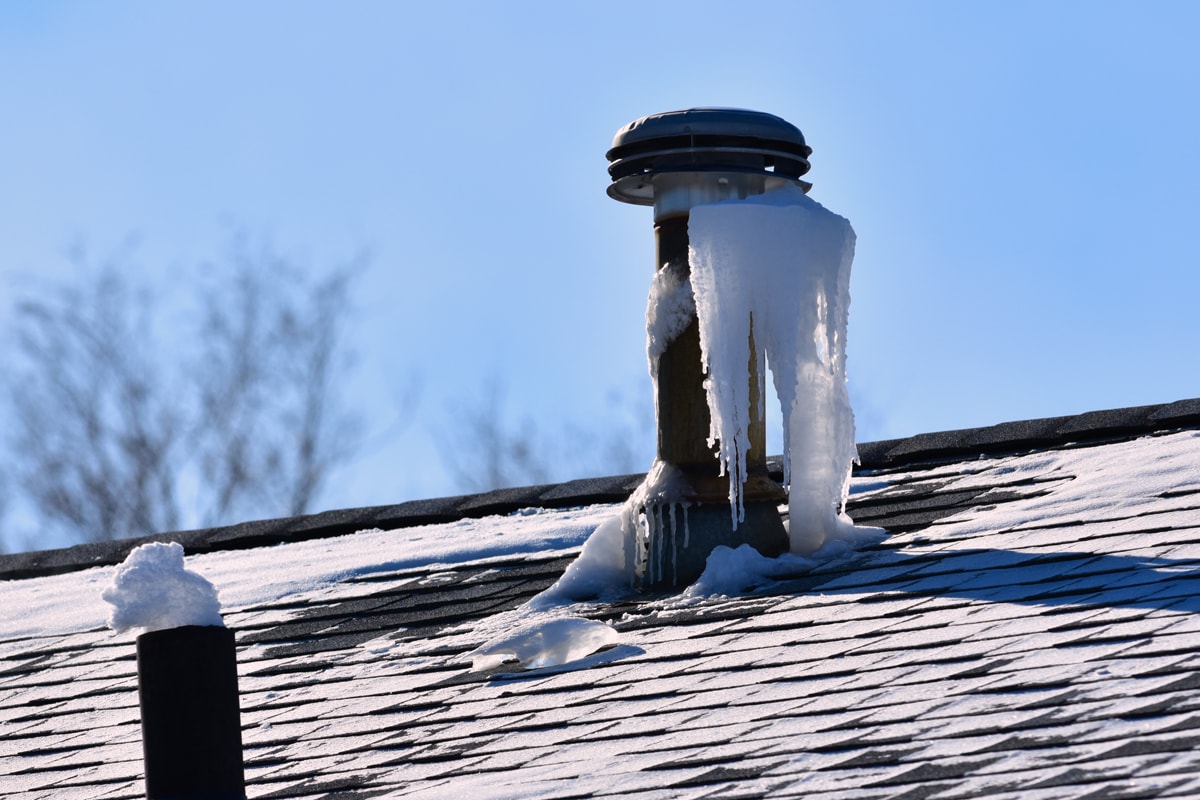
Vent pipes can become clogged over time due to outdoor elements. Some of the things that can clog your plumbing system include:
- Outdoor debris like leaves and branches
- Ice during winter months
- Rust and corrosion
- Bird's nest
- Foreign objects
To prevent clogging, you can use vent caps that are easy to install.
Check out this Raven mesh screen termination vent cap cover on Amazon.
Wrapping Up

Vent stacks that go through the roof need to be terminated at least 6 inches from the surface or 6 inches from the anticipated snow.
If the roof is used as an assembly deck, parking, or promenade, the vent stack should be at least 7 feet high.
Thank you very much for reading through. We hope you found the information you needed on vent pipe extensions.
And while we have your attention, do check out these other plumbing-related articles below.

